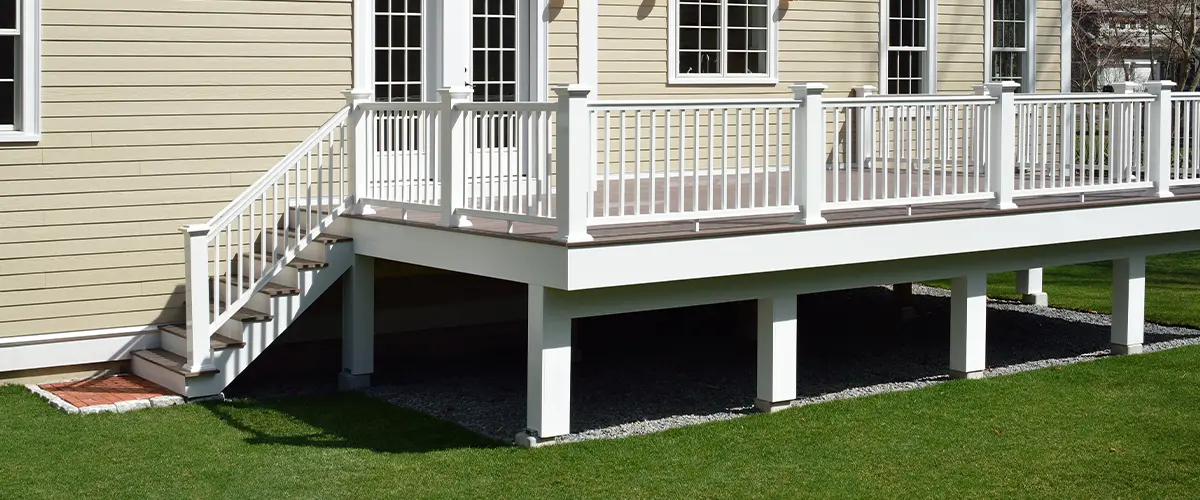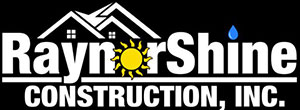Best Gravel for Under Deck: Types, Comparison & Tips
If you’re thinking about adding gravel under your deck, you’re on the right track! Gravel is a great choice for this area because it helps with drainage, keeps weeds at bay, and gives your deck a clean, finished look.
But with so many types of gravel out there, which one is the best?
Let’s break it down in simple terms!

Why Put Gravel Under Your Deck?
Before diving into the best types of gravel, let’s quickly cover why you’d want to put gravel under your deck in the first place:
- Improves Drainage: Gravel helps water drain away from your deck, preventing moisture buildup that could lead to wood rot or mold.
- Weed Control: A layer of gravel blocks sunlight, making it difficult for weeds to grow.
- Prevents Erosion: Gravel stabilizes the ground under your deck, reducing soil erosion over time.
- Aesthetic Appeal: It gives your deck a clean, polished look, making the space underneath more visually appealing.
Types of Gravel to Consider
1. Pea Gravel
- What It Is: Pea gravel consists of small, smooth, round stones, typically about the size of peas.
- Why It’s Good: It’s easy to spread and has a nice, uniform appearance. The small size of the stones makes it comfortable to walk on if you need to access the area under your deck.
- Considerations: Pea gravel doesn’t compact very well, so it might shift over time, especially if you plan to place heavy objects on it.
2. Crushed Stone
- What It Is: Crushed stone is made from larger rocks that have been broken down into smaller, jagged pieces.
- Why It’s Good: The irregular shape of crushed stone helps it compact better, making it a more stable base. It also provides excellent drainage.
- Considerations: The sharp edges can be less comfortable to walk on and might not be as visually appealing as other options.
3. Washed Gravel
- What It Is: Washed gravel is similar to crushed stone but has been washed to remove any dust or small particles, leaving behind clean, smooth stones.
- Why It’s Good: Like crushed stone, it provides excellent drainage. The washing process also makes it cleaner and less dusty, which can be a plus for some homeowners.
- Considerations: Washed gravel tends to be more expensive than other types of gravel.
4. River Rock
- What It Is: River rock consists of smooth, rounded stones typically found in riverbeds.
- Why It’s Good: River rock is very attractive and provides a natural look. It’s also great for drainage and erosion control.
- Considerations: River rock can be more expensive and harder to work with due to its larger size and weight.

How Much Gravel Do You Need?
- Area (in square feet) x Depth (in feet) = Volume (in cubic feet).
- Divide by 27 to convert cubic feet to cubic yards, as gravel is typically sold by the cubic yard.
Final Tips
- Weed Barrier: Consider laying down a weed barrier fabric before spreading the gravel. This adds an extra layer of protection against weeds while still allowing water to drain through.
- Edge Restraints: Installing edging around the perimeter of your gravel area can help keep the gravel in place and maintain a neat appearance.
Common Mistakes To Avoid
Skipping the Weed Barrier
One of the most crucial steps is laying down a weed barrier before adding the gravel. This fabric helps prevent weeds from growing up through the gravel, which can quickly make your space look unkempt and increase maintenance needs.
Without a barrier, weeds will find their way through, and you’ll end up spending more time pulling them out.
Using the Wrong Type of Gravel
Choosing the right type of gravel is essential for both functionality and appearance. Pea gravel, for example, is smooth and looks nice, but it doesn’t compact well and can shift around over time.
Crushed stone, on the other hand, compacts better and provides excellent drainage, making it a more stable choice. Understanding the benefits and drawbacks of different types of gravel will help you make the best decision for your deck.
Improper Drainage
Proper drainage is vital to prevent water from pooling under your deck, which can lead to moisture problems and damage the deck’s structure.
Ensure the ground is properly graded before laying the gravel so that water flows away from your home. A slight slope can make a big difference in directing water runoff and keeping the area under your deck dry.

best gravel for under deck - FAQs
What is the best type of gravel to use under a deck?
Do I need a weed barrier under the gravel?
How much gravel should I use under my deck?
Trust Our Professionals To Guide You
Choosing the right gravel for under your deck is key to creating a functional and attractive outdoor space. By avoiding common mistakes like skipping the weed barrier and ensuring proper drainage, you can make the most of your deck area.
At Raynorshine Construction, we specialize in helping you get the details right.
Whether you’re starting a new project or upgrading an existing one, our expert team is ready to transform your outdoor space. Contact us today – let’s create something beautiful together! (910) 985-8064
